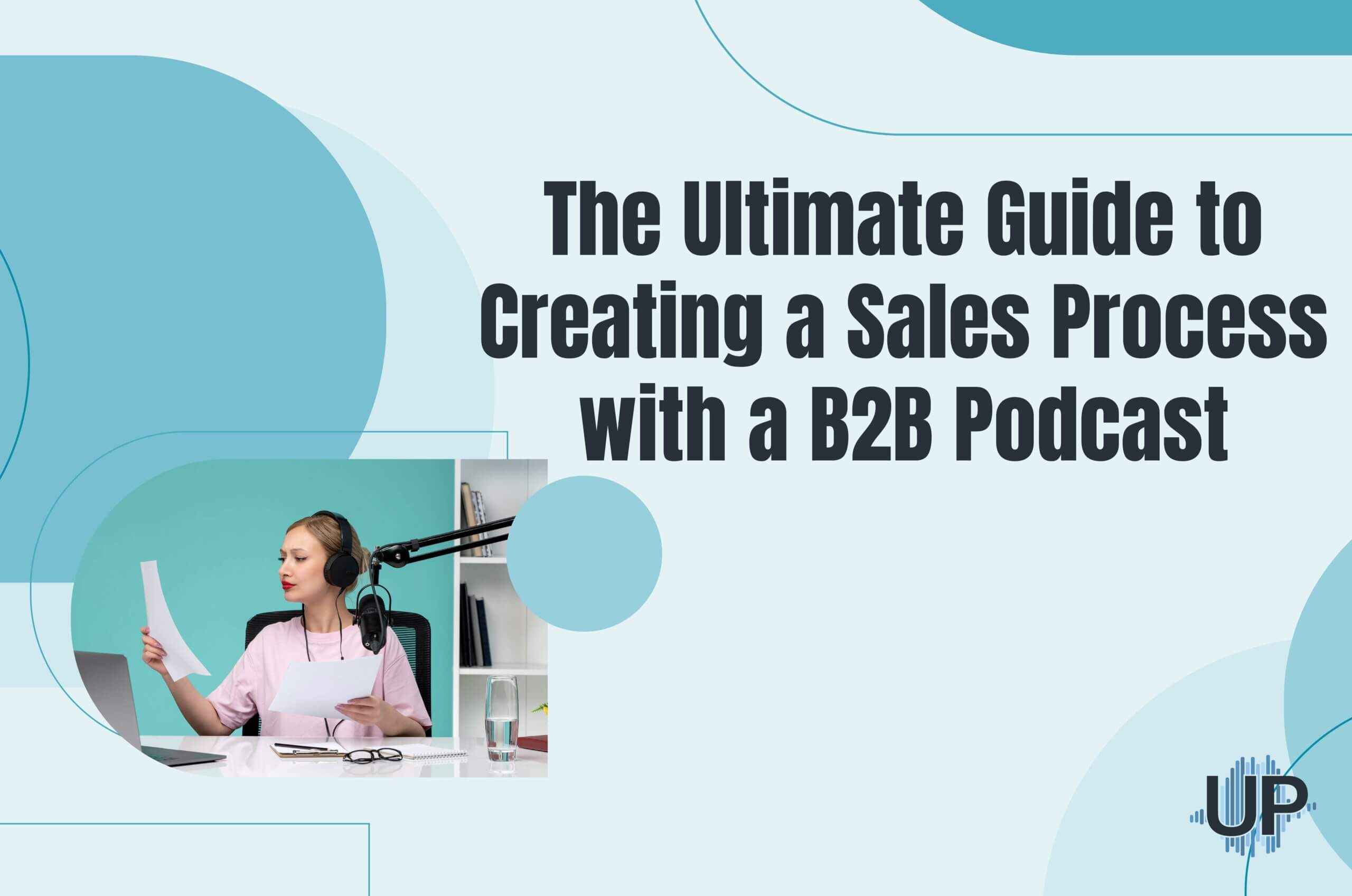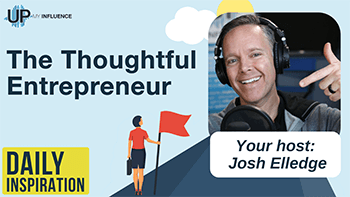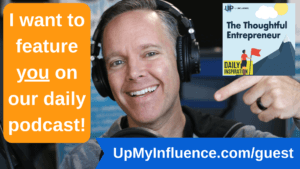
B2B podcasts are emerging as a potent tool for enhancing visibility, establishing authority, and engaging directly with your target audience. Their integration into the sales funnel marks a strategic approach to nurturing leads and building lasting business relationships. Here's how you can seamlessly incorporate your sales process with B2B podcast:
- Awareness Stage: Use your B2B podcast to introduce potential clients to your brand and solutions. Tailor content to address common industry challenges or trends, positioning your brand as a thought leader. Guest appearances by industry experts can add credibility and attract a wider audience.
- Consideration Stage: As listeners move down the funnel, focus episodes on more specific issues or solutions your business offers. This is the stage to dive deeper into how your products or services solve the problems discussed in earlier episodes, providing case studies or success stories for context.
- Decision Stage: Towards the bottom of your sales process with B2B podcast, create content that helps listeners make an informed decision. Episodes can include detailed product demonstrations, customer testimonials, or even Q&A sessions where potential clients submit questions.
- Retention and Advocacy: After closing a sale, your B2B podcast can continue to play a vital role in customer retention and turning clients into brand advocates. Offer advanced insights, updates on industry trends, or discussions on future challenges to keep your audience engaged and loyal.
Integrating a podcast into your sales funnel is not a one-size-fits-all approach. It requires a deep understanding of your audience's needs and preferences at each stage of their buyer's journey. By delivering valuable content that resonates with your audience, a B2B podcast can effectively guide them from initial awareness to loyal advocacy, fostering a strong, trust-based relationship along the way.
Identifying Your Target Audience and Goals
Successful B2B podcasts start with two foundational elements: a well-defined target audience and clear, achievable goals. Here's how to pinpoint who you're speaking to and what you aim to achieve with your podcast:
- Define Your Target Audience: Understand who your ideal listeners are by considering factors such as industry, job role, challenges, and interests. This insight ensures your content is relevant and engaging to those who matter most to your business.
- Segment Your Audience: Not all listeners are at the same stage in their buyer's journey or face the same challenges. Segmenting your audience allows you to tailor your episodes to different listener groups, making your content more impactful.
- Set Clear, Measurable Goals: Determine what success looks like for your B2B podcast. Goals can range from generating a specific number of leads, increasing website traffic, establishing thought leadership, or enhancing customer loyalty. Ensure these goals are Specific, Measurable, Achievable, Relevant, and Time-bound (SMART).
- Align Podcast Content with Business Objectives: Your B2B podcast's topics, format, and guests should align with your broader business objectives. This alignment ensures that your podcast not only appeals to your target audience but also drives them towards actions that contribute to your business goals.
- Continuous Audience Feedback: Engage with your audience through surveys, social media, or direct communication to gather feedback and refine your understanding of their needs and preferences. This ongoing dialogue helps you adjust your content strategy to better serve your audience and meet your business objectives.
Identifying your target audience and setting clear goals are crucial steps in developing a successful B2B podcast. They ensure that your podcast resonates with the right people and contributes positively to your sales funnel, fostering a community of engaged listeners and prospects.
Select the Right Podcast Format
Choosing the appropriate format for your B2B podcast is pivotal to its success. The format should cater to your audience's preferences, align with your content goals, and facilitate the delivery of your message effectively. Here are the primary podcast formats to consider:
- Interview Style: This popular format involves hosting guests with expertise or experiences relevant to your audience. Interviews are excellent for providing diverse perspectives, building your network, and engaging listeners with real-world insights.
- Solo Episodes: In solo podcasts, the host delves into specific topics, sharing knowledge, advice, or insights. This format is ideal for establishing personal connections with your audience and positioning yourself as an authority in your field.
- Panel Discussions: Featuring multiple guests, panel discussions offer a dynamic exploration of topics from various angles. This format is engaging and can cover a broad range of viewpoints in a single episode, adding depth to complex subjects.
- Storytelling: Leveraging the power of narrative, storytelling podcasts captivate listeners with compelling narratives that illustrate key business lessons, case studies, or success stories. This format is highly engaging and can make abstract concepts more relatable and memorable.
- Educational Series: Designed to instruct, these series-based podcasts focus on teaching specific skills, concepts, or strategies over several episodes. They are ideal for building a loyal audience base interested in deepening their knowledge in your industry.
Selecting the right podcast format is crucial in engaging your audience effectively. By aligning the format with your audience's preferences and your content's strengths, you can create a podcast that resonates deeply, educates, and entertains, thereby enhancing its role in your B2B sales funnel.
Give an Effective Pitch via Storytelling or Success Stories
Incorporating storytelling or success stories into your B2B podcast can significantly enhance its appeal and effectiveness. Stories have the power to connect with listeners on an emotional level, making your message more memorable and impactful.Here's how to leverage storytelling and success stories to give an effective pitch:
- Storytelling Techniques: Use the classic structure of setting, conflict, and resolution to craft stories that engage listeners. Begin with a relatable problem your target audience faces, describe the journey to find a solution, and conclude with the successful outcome achieved. This structure helps listeners visualize the benefits of your product or service.
- Incorporate Success Stories: Share real-life examples of how your business has helped clients overcome challenges and achieve their goals. Success stories not only provide social proof but also help potential clients see the practical applications and benefits of your offerings.
- Make It Relatable: Ensure your stories resonate with your target audience by addressing their specific needs, challenges, and aspirations. Use language and scenarios familiar to them, making the narrative as relevant and engaging as possible.
- Use Emotion Wisely: Emotional appeal can significantly increase the impact of your story. However, it's important to strike the right balance. Aim to inspire, motivate, and instill confidence in your listeners without overdoing it.
- Call to Action: Every story should lead to a clear call to action. Guide your listeners on what steps to take next, whether it's visiting your website, signing up for a trial, or contacting your sales team. Make the action step easy and straightforward.
- Guest Success Stories: Invite clients as guests to share their own success stories. This approach adds authenticity and can be incredibly persuasive to potential clients. It also strengthens your relationship with existing clients by showcasing their achievements.
- Measure Impact: Track the performance of episodes featuring stories and success stories to understand their impact on your audience engagement and conversion rates. Use this data to refine your approach and content strategy.
Effective storytelling and the sharing of success stories can transform your podcast from merely informative to truly compelling. By illustrating the real-world value of your products or services, you can forge a stronger connection with your audience, encouraging them to take the next step in the sales funnel.
Develop Landing Pages to Collect Leads
Creating dedicated landing pages for your B2B podcast listeners is a critical step in converting them from casual listeners to potential leads. These landing pages serve as a direct call to action (CTA), encouraging your audience to engage further with your brand. Here's how to develop effective landing pages:
- Clear Value Proposition: Your landing page should immediately communicate the value listeners will get by taking the desired action, whether it's downloading a resource, signing up for a webinar, or subscribing to a newsletter.
- Simple, Focused Design: Keep the design of the page clean and distraction-free, focusing the visitor's attention on the CTA. Use concise, compelling copy and ensure the layout is intuitive, with a prominent, easy-to-find CTA button.
- Tailor to Podcast Content: Customize landing pages for specific podcast episodes or series, linking the content directly to the offer on the page. This creates a cohesive experience for the listener and can increase conversion rates.
- Use Social Proof: Incorporate testimonials, client logos, or success stories on the landing page to build trust and credibility with potential leads.
- Optimize for Conversion: Test different elements of your landing page (like headlines, CTAs, images, and layout) to find the most effective combination for converting visitors into leads. Use tools like A/B testing to make data-driven decisions.
- Mobile Responsiveness: Ensure your landing page is optimized for mobile devices, considering a significant portion of your audience will access it via a smartphone.
- Fast Load Times: Page speed is crucial for keeping potential leads engaged. Optimize images and content to ensure quick load times, reducing the risk of visitors leaving before the page fully loads.
Track and Analyze: Implement tracking tools to measure the performance of your landing pages. Analyze metrics such as conversion rates, bounce rates, and visitor behavior to continuously improve the effectiveness of your pages.
Developing targeted landing pages for your B2B podcast can significantly generate B2B leads. By providing a clear, compelling, and cohesive path for listeners to follow, you can effectively convert them into leads, moving them further down the sales funnel towards becoming clients.
Nurturing Leads from Listener to Client
Transforming podcast listeners into clients is a strategic process that educates, engages, and guides them towards a purchasing decision. This involves understanding their needs and providing valuable content that builds trust and strengthens relationships. Here’s how to effectively nurture these leads effectively:
- Personalized Email Follow-ups: Segment your leads based on their interests and interactions with your podcast. Send personalized emails that provide additional value, such as exclusive content, episode recaps, or invitations to webinars that delve deeper into topics discussed on your podcast.
- Exclusive Content Offers: Reward your listeners for their engagement by offering them exclusive content. This could be in-depth guides, whitepapers, or even bonus podcast episodes that are only accessible to subscribers or those who have shown interest in specific topics.
- Engage on Social Media: Connect with your listeners on social media platforms. Use these channels to continue the conversation, share relevant content, and engage with your audience in a more informal setting.
- Regular Check-ins: Use brief surveys or direct outreach to check in with leads periodically. Ask for feedback on your podcast, inquire about their current challenges, and offer solutions through your products or services.
- Provide a Seamless Experience: Ensure that the transition from listener to client is as smooth as possible. Make it easy for leads to schedule consultations, request demos, or get in touch with your sales team.
- Educate, Don't Hard Sell: Focus on educating your leads about the value and benefits of your offering rather than pushing for a hard sell. Build trust and authority by showing how your product or service solves problems or enhances business operations.
Effective lead nurturing is about building relationships and providing value at every step of the customer journey. By engaging your podcast audience with personalized, valuable content and interactions, you can gradually convert listeners into loyal clients.
Close the deals
To close deals with leads from your B2B podcast, first identify leads showing clear interest through engagement and interaction. Reach out to them with personalized messages that articulate how your offerings meet their specific needs, highlighted by their interactions with your content. Make your offer clear and compelling, emphasizing the value and benefits specifically tailored to them, including any special incentives for B2B podcast listeners.
Simplify their decision-making with transparent pricing and an easy onboarding process. Provide additional assurance through testimonials or guarantees to address any final hesitations. Lastly, follow up promptly to answer questions and reinforce the value of your proposition, keeping the momentum towards closing the deal.
Build Relationships and Continue to Create a Sales Process with B2B Podcast
After closing deals, the focus shifts to building lasting relationships with your new clients and identifying opportunities for continued sales.
Maintaining regular contact through personalized emails, providing ongoing support, and offering exclusive updates or services are key strategies. Engage with clients on social media and invite them to exclusive events or webinars to deepen the relationship.
Always seek feedback to improve your offerings and address their evolving needs. By consistently delivering value and demonstrating your commitment to their success, you foster loyalty and open the door to upselling or cross-selling opportunities, ensuring a long-term partnership.
Measure and Optimize your Podcast Strategy
Measure your B2B podcast's success by tracking key metrics such as listener numbers, episode downloads, engagement rates, and conversion rates from calls to action. Analyze which topics, formats, and guests resonate most with your audience to refine your content strategy. Listen to feedback from surveys and social media to understand audience preferences and areas for improvement.
Adjust your content based on this feedback and experiment with promotional tactics to attract new listeners. Regularly reviewing and optimizing based on these insights will enhance content engagement, grow your audience, and drive more leads into your sales funnel.
Overall, B2B podcasts are powerful tools for enhancing visibility and converting listeners into clients. This guide has detailed the integration of podcasts into your sales funnel, from selecting appropriate formats and developing landing pages to nurturing leads and closing deals. Each component plays a critical role in building relationships and establishing authority in your industry.
Listen to the Thoughtful Entrepreneur
More Resources from UpMyInfluence:
How to Be An Exceptional Podcast Host


